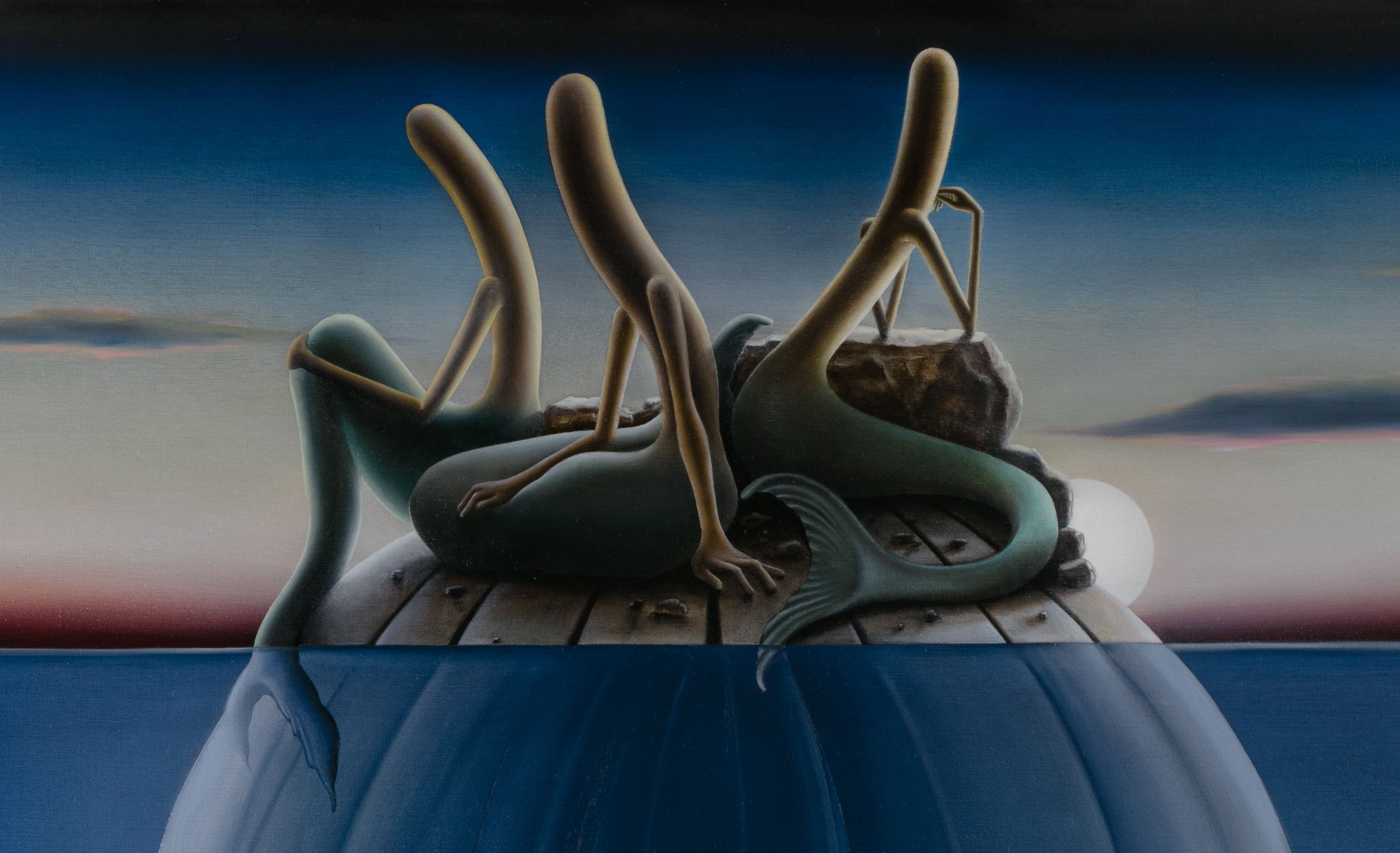Simone Subal Gallery is very excited to announce the opening of Emily Mae Smith’s The Sphinx or The Caress on Sunday, September 10, 2017. This is Smith’s first solo show at the gallery. The exhibition runs until October 29, 2017. Please join us for an opening reception on September 10 from 6 – 8 pm.
Emily Mae Smith is versed in various strategies of representation. She pulls from disparate sources to create paintings that reflect the complexity of our time and personhood. She has been particularly interested in a wide range of neo-classical and symbolist works—commonly known as the twisted end of academic painting—in part because these compositions delve deeply into the abyss of the subconscious.
Paintings such as The Other End playfully manipulate a bookplate from the fin-de-siècle journal The Studio into a gendered portal addressing the frame of painting itself. Another work Sentinel Madonnas (Monument Valley) brings together imagery drawn from M.C. Escher, a popular video game, and medieval icon painting. A larger painting, The Riddle, riffs on Jean-Auguste-Dominique Ingres’ famous work Oedipus and the Sphinx from 1808. Smith maintains many of Ingres’ distinctive elements. She has, however, made a crucial alteration: Oedipus has been replaced by Smith’s recurring “broom lady” character, a clear reference to the bewitched broom in the film Fantasia and also a vehicle for Smith to explore the anxiety surrounding the creative act as well as the formation of subjectivity.
A central aspect of Smith’s imagery is a re-working of art history’s exclusion of the inner lives of women. This critique is bound up in her own assessment of the present day—a moment in which misogyny is rampant yet deeply buried in our shared myths—and the ways in which works of art have traditionally represented women as either a muse or as a femme fatale. She is particularly interested in how identity is inscribed on a body, and her surreal, anthropomorphic figures become sites to construct complex narratives and internal dialogues. Nowhere is this more apparent than in her Portrait as a Klein Bottle, which transforms the Mobius strip-like vessel—it has no discernable inside or outsides and thus cannot contain anything—into a metaphor for the self and the constant mutability of subjectivity.
A subtle, dry humor lurks on the surface of the works on view. However, Smith does not look for cheap laughs. Instead, she uses humor to reveal a sense of pain and truth, a means to express inequities and disparities. Smith’s most recent paintings are powerful, complex worlds that compress historical time, raise questions about authorship, and display trenchant social critique through the cipher of remarkably rendered compositions.














































































































